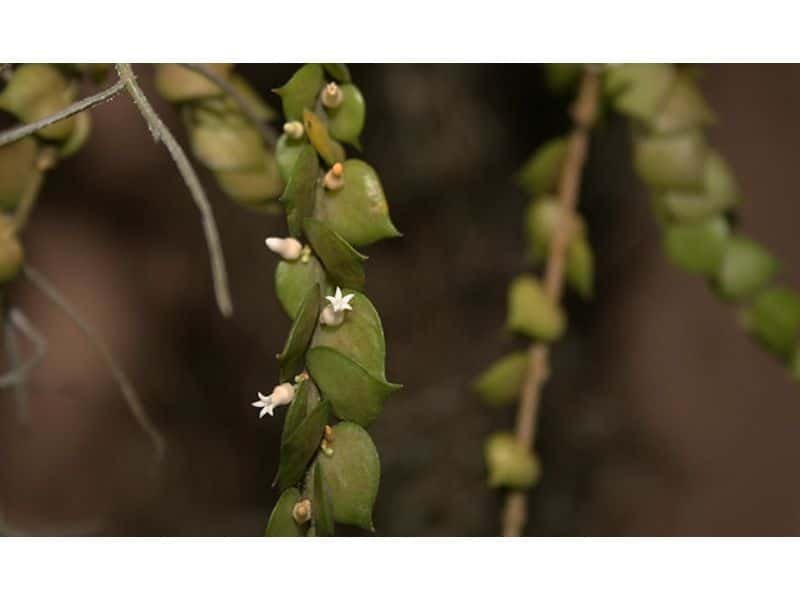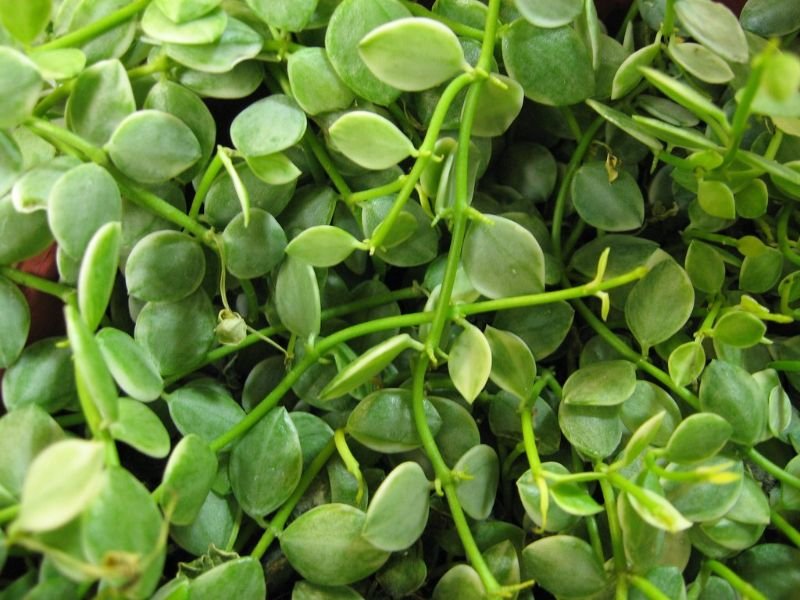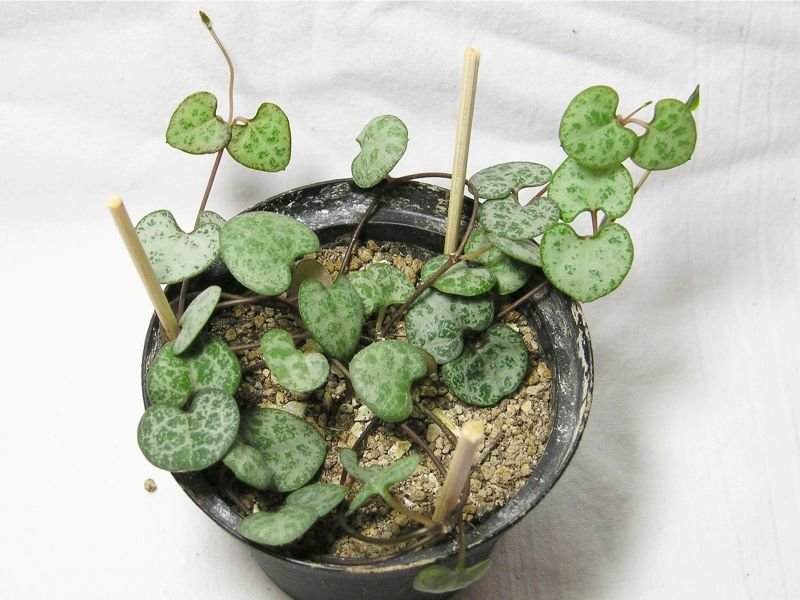Are you a plant lover who is struggling to tell the difference between Dischidia Ruscifolia and String of Hearts? Don’t worry; you’re not alone. These two plants may look similar at first glance, but they belong to different plant families and have distinct characteristics. In this article, we will discuss in detail how to differentiate between Dischidia ruscifolia and String of Hearts, their unique features, and how to care for them.
Table of Contents
Overview

Dischidia Ruscifolia, commonly known as the Million Hearts plant, is a small trailing epiphyte that belongs to the Milkweed family. It is native to Southeast Asia and is prized for its heart-shaped leaves and striking white veins. On the other hand, String of Hearts, also known as Ceropegia woodii, is a member of the Asclepiadaceae family and is native to South Africa. It has long, thin, cascading stems with small, heart-shaped leaves.
Differences in Appearance

Dischidia Ruscifolia has thick, succulent leaves that are green in color and have white veins. The leaves are shaped like hearts and are about 1-2cm in size. The plant’s stems are thin and trailing, with small aerial roots that attach to surfaces, allowing the plant to climb up walls and trees.

In contrast, String of Hearts has thin, wiry stems that can grow up to several feet long. The leaves are small and heart-shaped, with a silver-green hue, and are about 1-2cm in size. The leaves are arranged in pairs along the stem, and the plant’s root system is tuberous.
Differences in Care
Dischidia Ruscifolia prefers bright, indirect light and requires moderate watering. It can be grown in a well-draining potting mix that contains peat moss, perlite, and sand. The plant is sensitive to cold temperatures, so it should be kept in a warm environment.
On the other hand, String of Hearts prefers bright, indirect light but can also tolerate some direct sunlight. It is drought-tolerant and can be grown in a well-draining potting mix that contains sand, perlite, and peat moss. The plant should be watered sparingly, allowing the soil to dry out between waterings.
Unique Characteristics of Dischidia Ruscifolia

Apart from its heart-shaped leaves with striking white veins, Dischidia Ruscifolia has unique features that make it a fascinating plant to grow. The plant produces small, white, star-shaped flowers that are highly fragrant and attract pollinators such as butterflies and bees. The flowers are followed by small, inflated pods that contain seeds.
Dischidia Ruscifolia is also known for its symbiotic relationship with ants. The plant provides shelter and nutrients to the ants in exchange for protection from predators and the removal of dead plant material.
Unique Characteristics of String of Hearts

The string of Hearts is also a unique plant with several distinctive features. The plant’s stems can grow up to several feet long and produce small, tubular, pinkish-purple flowers that are about 1-2cm in size. The flowers are highly fragrant and attract pollinators such as bees and butterflies.
The string of Hearts also has a unique way of propagating itself. The plant produces small, potato-like tubers along its stems that can be used for propagation. Simply cut a stem that has a few tubers and plants it in well-draining soil, and the plant will grow new roots and continue to thrive.
Similarities between Dischidia Ruscifolia and String of Hearts
Despite their differences, Dischidia Ruscifolia and String of Hearts share some similarities. Both plants prefer bright, indirect light and can tolerate some direct sunlight. They also require well-draining soil and should be watered sparingly.
Another similarity is that they are both easy to care for and can thrive in a variety of environments. They can be grown as houseplants, and their small size and trailing habit make them perfect for hanging baskets.
FAQs
Q: Can Dischidia Ruscifolia and String of Hearts be grown together in the same pot?
A: Yes, they can be grown together in the same pot as long as they have similar care requirements.
Q: Do Dischidia Ruscifolia and String of Hearts need fertilizer?
A: Yes, both plants can benefit from regular fertilization during the growing season.
Q: Are Dischidia Ruscifolia and String of Hearts poisonous to pets?
A: Yes, both plants can be toxic to pets if ingested. Keep them out of reach of pets and children.
Q: Can Dischidia Ruscifolia and String of Hearts be propagated by cuttings?
A: Yes, both plants can be propagated by stem cuttings.
Q: Can Dischidia Ruscifolia and String of Hearts be grown outdoors?
A: Yes, they can be grown outdoors in warmer climates or in a protected area.
Conclusion
In conclusion, Dischidia Ruscifolia and String of Hearts may look similar at first glance, but they have distinct differences in their appearance, care requirements, and unique characteristics. Understanding these differences is essential for their proper care and cultivation. By following the tips and recommendations outlined in this article, you can successfully grow and enjoy these beautiful and unique plants.

Gardening is my passion and growing plants indoors has always been a stress relief for me. Grow a banana tree in my apartment once (although failed to produce bananas).






